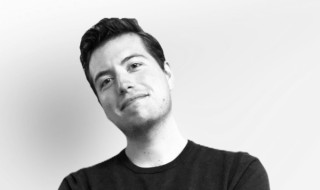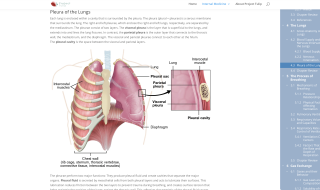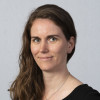Making medicine education build on each other's educational resources
Open source software allows programmers worldwide to collaborate on the code of a particular product. Through GitHub, that new code spreads super fast in both the profit and non-profit sectors. That idea inspired medical lecturer Stijn Bos. Can we set up a similar community for medicine education, with open and online educational resources and where users and publishers build on each other's work?
Key facts
Who: Stijn Bos
Role: medical educator (and initiator of SOLGEN / project Tulip)
Theme: digital learning materials
Challenge: Educators often lack access to source files of learning materials, preventing them from adapting or building upon them — they must recreate materials or use them unmodified.
Solution: They build SOLGEN, an open community where materials are shared under a CC license so educators can build upon, adapt, and share them without copyright barriers.

Stijn Bos
That became SOLGEN, which stands for Samenwerkende Open Leermaterialen Geneeskundeonderwijs (Collaborative Open Learning Materials for Medical Education). During his residency, Stijn Bos was in the operating theatre and the surgeon wanted to show him a picture of a liver during the operation. The only suitable image they could find was a black and white image from an ancient atlas. Bos: ‘I thought: why is it so difficult to find a good image online? Shouldn't that be much easier?’ It marked the start of Project Tulip, which focused on creating online learning materials in the field of internal medicine. He recruited medical specialists, general practitioners, providers of (closed) learning materials and students to jointly design a new online learning method for internal medicine. Existing learning materials were put online and content was added. The entire collection was made freely available under the CC-BY 4.0 licence to medical students worldwide, without the need to log in and without any copyright issues.

"The aim of this project is that lecturers can build on each other's work, without having to worry about copyright."
E-learning library
His own hospital, the then AMC, was so enthusiastic that they were keen to make educational resources from the other medicine fields available online as well. That became the next challenge for Bos and his project Tulip. He set up a foundation so that it became a neutral project for all faculties. He managed to make the AMC's entire e-learning library accessible online, without copyright. At that time, the merger between the AMC and VUMC also became a reality. That led to even more exchange of materials. Because both hospitals got used to working together much more intensively. They also used each other's lecturers, for example.
Access to source materials
However, there was one more aspect that annoyed Bos. "We had made some educational resources accessible to everyone in the past, but as a lecturer you don't have access to the source. That means that if you want to use an e-learning module in your own teaching, you don't have the possibility to modify it a bit. Either you use the module as it is, or you build something similar from scratch. That, of course, is an awful lot of work and a waste of time."
Reason enough to submit a grant application to SURF for the SOLGEN project. Whereas with Tulip the focus was on online availability, with the SOLGEN project the emphasis is on collaborating and opening up the materials. Bos: "The aim of SOLGEN is for lecturers to be able to build on each other's work. You can download a book chapter or e-learning module, adapt it, add your own logo and apply it in your own teaching, without having to worry about copyright."
Apart from making lecturers' work easier, Bos also hopes it will lead to more harmonisation between medical schools. "Because now there are quite a few differences, which is strange, because you all do use the same insights. It would be nice if lecturers get to know each other better through SOLGEN. If you build on someone else's work, you might still have a question for them. Getting to know each other and sharing knowledge irrevocably leads to innovation," says Bos. After all, he sees the same thing happening with his brother. He is an IT professional in Silicon Valley and deeply integrated in the open source software community. Bos' dream, therefore, is for a global community of people building on each other's work to emerge in medicine education as well. In such a way that medicine schools from Malaysia to Argentina and from New York to Amsterdam benefit from each other's knowledge and make each other better.
"In this way, we hope that more and more doctors and medicine teachers will want to contribute to the development of open and online educational resources."
Outcome
Lecturer cooperation through SOLGEN has yet to accelerate. But fortunately, students know how to find the open and online educational resources. They are widely used not only in the Netherlands, but also in Mexico and India. Bos: "We hear that students are very happy that everything is free and freely accessible, without log-ins et cetera. We also use the same open-source plug-in that textbook publisher BSL also uses, which allows you to shade texts, add something in the margin and share those notes with others. That too is highly appreciated." It leads to the educational resources being used not only in medicine, but also in nursing courses.
He is now working hard to inform lecturers even better about the benefits of the open nature of the educational resources. "Fortunately, we already have some experience in doing PR. Several medical journals are covering it. This way, we hope that more and more doctors and medicine teachers will want to contribute to the development of open and online educational resources."
His dream is for the SOLGEN community to one day become as big as the open source software community. "That also started 30 years ago with the vision of one man making code for an operating system open and online. This software, Linux, is now at the heart of the fastest computers in the world. Almost all big companies work with it. Moreover, the open source concept is now everywhere. Hundreds of thousands of software engineers worldwide are working on many hundreds of open source applications. How great would it be if one day we achieve this for medicine materials too?"

